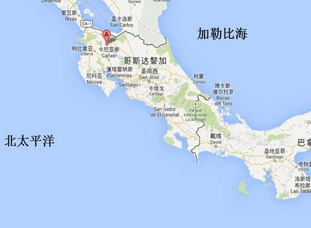Project recommendation
Contact us
tel:027-87580888
phone:18971233215
fax:027-87580883
email:didareneng@163.com
address: Inside the China University of Geosciences, 388 Lumo Road, Hongshan District, Wuhan (Wuhan)
 industry news
industry news Active geothermal regions
The relative motion of plates, of any size, gives rise to several possible interactions.
These are shown in Fig. 1.1
When a plate comes under compression, it can relieve the stress by folding, by cracking and thrusting one piece upon the next, by cracking and trenching beneath the next, and by thickening. Trenching or subduction is one of the most important mechanisms that give rise to high-temperature geothermal regions. When a plate is subjected to tension, it can relieve the stress by cracking open and rifting, by cracking in several places leading to down-dropping, and by thinning. All of these responses to tension lead to anomalous geothermal regions that may be conducive to exploitation.
Two plates may also slide past each other along what is called a transform fault, per- haps the most famous of which is the San Andreas fault running along much of the length of California
Fiq. 1.1 Response of plates to compression and tension
in the United States [18]. While this fault, and others related to it, have caused immeasurable harm and financial loss from numerous earthquakes, it also has given rise to several commercial geothermal resources that have been beneficial.
The coincidence of earthquake zones and geothermal regions has been depicted in
a NOAA map (see Fig. 1.2) showing the collocation of these two phenomena. The loci of earthquakes correspond very closely with the boundaries of the massive crustal plates that comprise the tectonic model of the Earth's surface structure.
The plate boundaries experience various kinds of interactions as depicted in Fig. 1.1. From the viewpoint of geothermal exploitation, the most important of these occur along the edges of the gigantic Pacific plate, the so-called "Pacific Ring of Fire." If we include the two adjacent eastern plates, the Cocos and the Nazca plates, as well as the western one, the Philippine plate, then the following countries (in clockwise order) are affected: United States, Mexico, Guatemala, El Salvador, Honduras, Nicaragua, Costa Rica, Panama, Colombia, Ecuador, Peru, Bolivia, Chile, New Zealand, Micronesia, Papua New Guinea, Indonesia, Philippines, China, Japan, and Russia. All 21 of these countries have exploitable geothermal resources and 13 of them have geothermal power plants in operation as of mid-2007. Generally speaking, subduction zones exist beneath all land masses in contact with the Pacific, Cocos, and Nazca plates, except the contiguous United States and Mexico where transform boundaries exist. The Alaskan
Aleutian Islands lie in a subduction zone and Hawaii lies over a localized hot spot in the middle of the Pacific plate.
The mid-Atlantic ridge, a rift zone, is home to Iceland and the Azores, two volcanic Islands that have put their geothermal resources to practical use for many years. Other regions such as the Mediterranean and Himalayan belts and the East African Rift zone also are being exploited for geothermal power.

Figure 1.3 shows a conceptual diagram of a subduction zone typical of what is found along the Central and South American coasts [20]. Oceanic crust is sliding from left to right and diving beneath the continental land mass. The shaded slab labeled lithosphereis the very upper layer of the mantle which moves as a nearly rigid body. Below it lies the asthenosphere which is the molten but highly viscous part of the mantle. The tren- ching crust carries with it sea-floor sediments as it rubs against the edge of the continent. This relative motion is not smooth but marked by abrupt jolts whenever the stress built up in the interface exceeds the frictional resistance. This creates very deep-seated earthquakes that can have devastating effects. Nearly all the major cities of Central America, for example, have felt the power of such earthquakes. Partial melting of the lithosphere at the interface is believed to give rise to plutons of molten rock that tend to move upwards owing to their lower density and higher temperature than the native rock. It is the emergence of these magma bodies, sometimes violently, that account for the nearly unbroken string of active volcanoes from Guatemala to the southern tip of Chile. These magmatic zones offer ample heat sources to accompany high precipitation that occurs over the region to create many potential hydrothermal geothermal systems.
An example of a non-magmatic hydrothermal system is the geothermal province known as the Basin and Range in Nevada, LJ.S. This geologic region was created by extensional forces that have given rise to alternating ranges of mountains separated by valleys (basins). Steep faults associated with the edges of the mountain ranges are targets for geothermal development and currently support 50 geothermal power units, totaling 185 MW.










